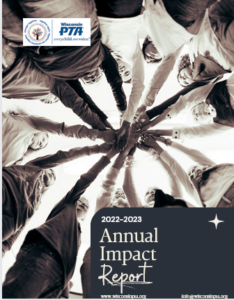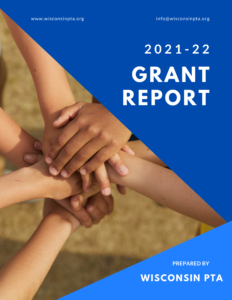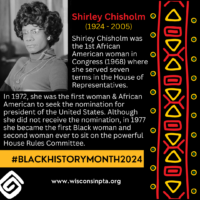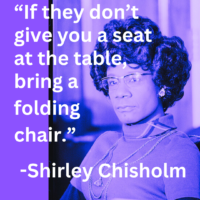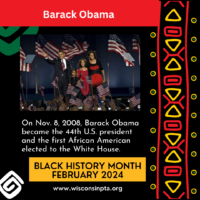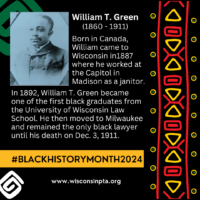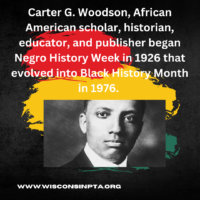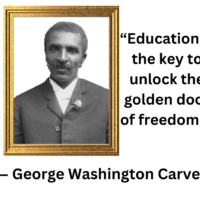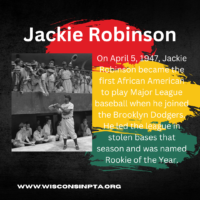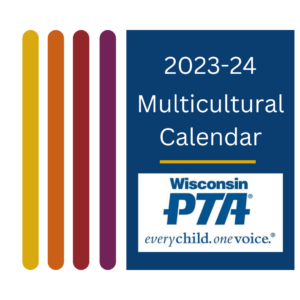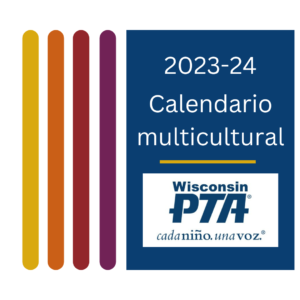We all must remain committed to our mission: to make every child’s potential a reality by engaging and empowering all families and communities to advocate for all children.
For PTA, all means all.
We must continue to hold ourselves accountable for our work surrounding diversity, equity, inclusion and accessibility. This work is not simply more work, it is the work. Every decision we make as a PTA must be thought of through an equity lens; we must ask ourselves, “how will this impact our most vulnerable students?”
New Grant Opportunities for 2023-'24!
Grant applications are now open!
Due March 25, 2024
Last Year's Recipients
2021 - '22 Recipients
Black History Month 2024
Dos and Don’ts of making your local unit more inclusive
- Do:
- In-person outreach
- Back to school nights, drop off and pick up lines, and parent-teacher conferences are just a few ways to find new parents and form connections.
- Make personal requests/invitations
- Broad requests for volunteers don’t usually produce optimal results. A social media post here or there is fine, but most volunteer roles will end up being filled by forming meaningful connections with other families, figuring out what each person’s talents and abilities are, and asking them personally if they’d be willing to contribute.
- Communicate in all major languages spoken by families, and include photo descriptions for visually impaired individuals
- Reach out to parents who are different than you
- If you’re seeing the same handful of parents at every single meeting, or are constantly playing the PTA board shuffle (officers changing positions when their term limits are up), it would be a good idea to take a step back and figure out why. It’s natural to form friendships with the people who live near you or with whom you work closely with on the PTA board, but make sure you are still reaching out to parents you don’t normally talk to.
- In-person outreach
- Don’t:
- Only communicate via email, flyers, social media, etc.
- It’s fine to use these methods of communication, just don’t make it the only way you communicate
- Assume everyone can read and write in their home language
- Not every adult can read or write. Consider sending out pre-recorded phone messages or emailing and posting videos to relay messages
- Remember: The effort to reach across the ENTIRE community is worth it.
- Only communicate via email, flyers, social media, etc.
- Do:
- Ice breakers
- Turn on closed captions
- Pay attention to the times and locations of meetings
- Does everyone have transportation to get to the location of the meeting? Would offering a virtual option boost attendance? Does anyone work second or third shift? Would offering free child care for families while they attend meetings help?
- Create agendas with all parents in mind
- Should you be printing agendas in more than one language, or using a dyslexic-friendly font? Remember, do not assume every adult in attendance can read
- Pay attention to who speaks most in meetings – and who doesn’t – and deliberately structure meetings to ensure equitable participation
- Save space on your agenda for those who don’t speak as much, and hold to it.
- Don’t:
- Always sit in the same spot
- Mix up your seating arrangement and encourage others to sit by someone new
- Assume that people are uninterested because they didn’t come to the meeting
- There are a number of reasons families may not attend a meeting, but that doesn’t mean they don’t care. Make sure it’s known that anyone can contact the PTA board at any time with questions, comments, concerns or suggestions.
- Assume that everyone in attendance knows what is going on or how the meeting is run
- It can be challenging and even intimidating to figure out what is going on at a meeting – where do I sit? When can I speak? Who is who on the board and what is their role? Make sure you introduce yourselves at every meeting and explain what each portion of the meeting is for at every single meeting. Announce when the appropriate time to speak is, or even add it to the agenda
- Always sit in the same spot
- Remember: Approach ALL parent meetings as important community building sessions
- Do:
- Assume that all families in the school have something to contribute, and they’re more likely to participate if they feel welcome, are included, and are asked directly.
- Listen to what parents across the community say should be done for the group to be more inclusive and representative.
- It can be difficult to hear what you may be doing wrong, but the only way we can improve is by having honest conversations with others.
- Don’t:
- Ignore the ways in which families already participate or contribute to the school
- Assume that families who don’t have privilege have not contributed to the school in meaningful ways.
- Remember: Formal parent organizations are not the preferred way for some parents to participate at school. ALL contributions that parents make to their children’s education are valuable.
- Do:
- Pay attention to how privilege plays out in meetings and decision-making
- Is it always the same parents at meetings, voting and deciding on activities and events that impact all students?
- Form relationships across differences to build the influence of families underrepresented in decision-making
- Pay attention to how privilege plays out in meetings and decision-making
- Don’t:
- Make decisions – even if it slows progress – without the voices and representation of parents who don’t have privilege.
- Ask your school for help sending out surveys, or simply ask the educators, social workers and administrators who know families best for their input
- Make decisions – even if it slows progress – without the voices and representation of parents who don’t have privilege.
- Remember: Pursuing equity and inclusion means being clear about how injustice shows up, finding ways to confront it, and changing the systems that create and sustain it.
- Do:
- Actively seek to encourage, follow, and respect the leadership of underrepresented families
- If certain families are not being represented at meetings and within decision-making processes, it’s your job to make personal connections and seek out their input
- Provide opportunities for group members and leaders to get to know each other
- Recognize the diversity in your community, openly discuss intentions to be inclusive, encourage people to voice concerns
- Openness and transparency in every aspect of PTA is important. Encourage others to ask questions and be open to new ideas. The “old way” of doing things isn’t always the best way.
- Actively seek to encourage, follow, and respect the leadership of underrepresented families
- Don’t:
- Continually utilize one person or a small group of people to make the PTA seem more representative of the school
- i.e.: Tokenism
- Continually utilize one person or a small group of people to make the PTA seem more representative of the school
- Remember: relationship building is key to breaking down walls and barriers
- Do:
- Choose events that reflect ideas, traditions, cultures, abilities and strengths of families represented in the school
- Make events accessible to ALL families
- Don’t:
- Hold events that put an undue burden on families
- Traveling far distances, odd hours, cost
- Only hold events at the same times/locations
- Switch things up! Friday nights aren’t the only times you can hold events. A weekday morning meet and greet, a work day to plant flowers around school right after school, a Sunday afternoon day of popsicles and playground fun can all be added in addition to the Friday night dance or STEM night.
- Hold events that put an undue burden on families
- Remember: events should involve the entire school community, and build and strengthen it across race, class, language, nationality, educational background, and abilities.
- Do:
- Choose events that reflect ideas, traditions, cultures, abilities and strengths of families represented in the school
- Make events accessible to ALL families
- Don’t:
- Hold events that put an undue burden on families
- Traveling far distances, odd hours, cost
- Only hold events at the same times/locations
- Switch things up! Friday nights aren’t the only times you can hold events. A weekday morning meet and greet, a work day to plant flowers around school right after school, a Sunday afternoon day of popsicles and playground fun can all be added in addition to the Friday night dance or STEM night.
- Hold events that put an undue burden on families
- Remember: events should involve the entire school community, and build and strengthen it across race, class, language, nationality, educational background, and abilities.
¡Nuevos recursos de la PTA Nacional!
Let’s Talk About Series
The Let’s Talk About Series is a National PTA collection of 10-Minute videos that will provide PTA parent leaders with tips to make their family engagement more inclusive for their school community.
- Let’s Talk About Engaging Multilingual Families
- Let’s Talk About Advocating with Students with Learning Disabilities
- Let’s Talk About Supporting Mental Health in Schools
- Lets Talk About Being “Identity-Blind”
- Let’s Talk About Religious Diversity
- Let’s Talk About Diversifying Leadership
- Let’s Talk About Racial Trauma
- Let’s Talk About Inclusive Curriculum
- Let’s Talk About Ableism
- Let’s Talk About Allyship
- Let’s Talk About Inclusive Meetings
- Let’s Talk About Racial Equity Programming
- Let’s Talk About Microaggressions
- Let’s Talk About Language Inclusivity
- Let’s Talk About Bias

